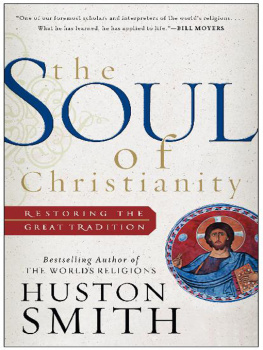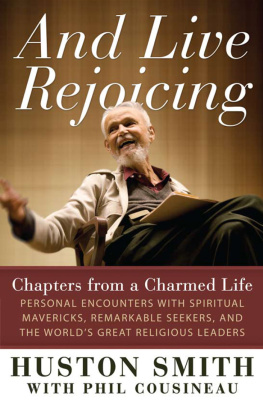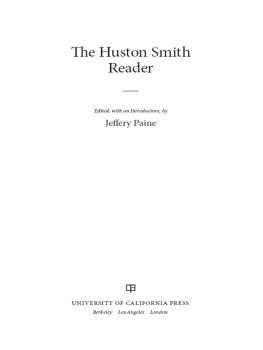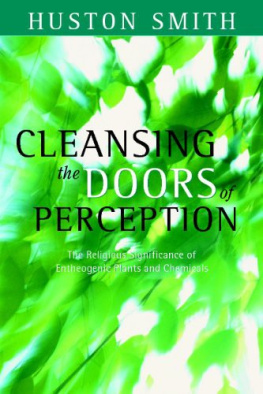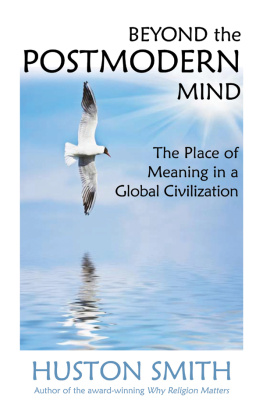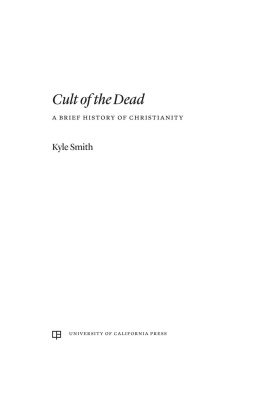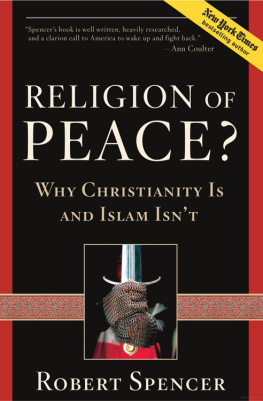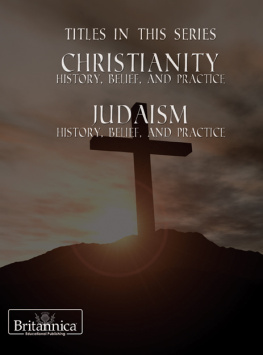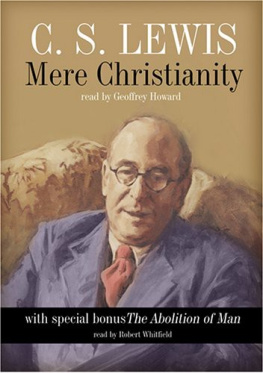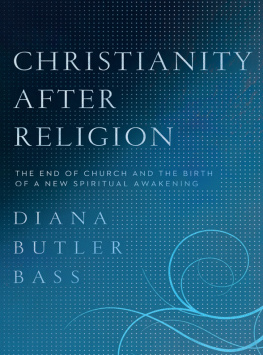THE SOUL
of
CHRISTIANITY
Restoring the Great Tradition
HUSTON SMITH

CONTENTS
THE CHRISTIAN WORLDVIEW
THE CHRISTIAN STORY
THE THREE MAIN BRANCHES OF CHRISTIANITY TODAY
This is a passionate book, written with a great sense of urgency. Endowed by blood and birth with an instinctive feeling for the holy, a sense of awe for the wonder and beauty of sacred things, I feel like a voice crying in the wilderness, the wilderness of secular modernity which religion is unable to pull us out of because it presents our culture with a babble of conflicting voices. And yet a voice that can pull us out of the wilderness is on our very doorstep. That voice is the voice of first-millennium Christianity, the Great Tradition, which all Christians can accept because it is the solid trunk of the tree from which its branches have sprung. It is the voice of peace, justice, and beauty that emanates from the Christian soul and which (in the company of other authentic religions) the world desperately needs.
I am not the only one at work on this project, and among my fellow laborers are a number who are better scholars and theologians than I am. Still, my sense of urgency remains. For precisely because of their towering talents it will take time for their thoughts to make their way into our culture. I have tried to write a book which, without oversimplifying, is readily comprehensible to every intelligent reader who is interested.
Several subsidiary points can help to place the book in perspective:
First, it is not a complete account of its subject. It is restricted to Christian faith and gives only passing attention to institutional developments, and it bypasses the dark side of Christian history entirely.
Second, it is not a scholarly treatise. It omits references and contains very few footnotes. Here and there I make minor changes in the wordings of the writers I quote so that they will fit smoothly into my text. When quoting scripture I choose whatever translation best suits my needs.
Third, the book is not combative. It respects other interpretations of Christianity and does not argue with them. Their authors have done what they needed to do, and I have done the same.
Last in this list of waivers: while I assume full responsibility for everything through Part One, when I move to the Christian story in Part Two I try not to be innovative. I think of it as the subtitle of the book indicates, as a work of restoration. Countering the current tendency to be skeptical about the past, I try to show how first-millennium Christianity can surprise the present with new life.
Stated positively, I have tried to describe a Christianity which is fully compatible with everything we now know, and to indicate why Christians feel privileged to give their lives to it. I found writing this book exhilarating, for it enabled me to see more clearly than before the intellectual and spiritual gold of Christianity, its intellectual expanse, the vastness of its atmosphere, and its genius for cutting through to the quick of life.
Part One is totally new. Part Two expands and deepens the chapter on Christianity in my book The Worlds Religions. Part Three presents the three main divisions of Christianity today.
Recently, a former MIT student of mine who went on to became a lifelong friend visited me and told me of an important incident in his life that he realized he had not previously shared.
He was a senior in high school in Cambridge, Massachusetts. Like most teenagers, he had more or less adopted his middle-class parents outlook, which was atheistic Marxism; and his interests in classical music, literature, and science led him frequently to the Boston Public Library. As he was browsing down one of its corridors one afternoon, his eyes fell on The Dialogues of Plato. He had heard of Plato but not read him, so he took the book from its shelf and it opened in his hands to the beginning of the seventh book of The Republic, where Platos most famous passage, the Allegory of the Cave, appears.
Readers of the book in hand will recall that in that allegory Plato asks his readers to imagine people who are imprisoned in a grotto, their legs and necks fettered from childhood so that they remain in the same position, able to look only at the caves low back wall. Behind them is a bonfire, and between it and the backs of the prisoners is an endless poster parade of men carrying cardboard cutouts of the worlds objects. Thus all the prisoners ever see is an ongoing shadow play. Plato then asks us to consider the state of a prisoner who is released from his chains. Turning around, he beholds the bonfire and behind it the grottos opening. Led (for the prisoners eyes need to accommodate to the light) out of the cave into broad daylight, he can scarcely believe what he sees: an incredibly beautiful Technicolor world of three dimensions, and presiding over it all the magisterial sun.
Coming to the point of why he was telling me his story, my student said that when he came to the end of Platos allegory, he found that his face was streaming with tears.
What was it that brought those tears to his eyes? Plato might have said that my student had touched the wellspring of philosophy: the longing to be at home in the world. The Sand People of the Kalahari might say that what he was reading put him in touch with the big hunger that lies deeper in the stomach than the little hunger. For my part, when my student had concluded his visit I found myself flipping to a short passage in my Why Religion Matters which reads like this:
There is within usin even the blithest, most lighthearted among usa fundamental dis-ease. It acts like an unquenchable fire that renders the vast majority of us incapable in this life of ever coming to full peace. This desire lies in the marrow of our bones and deep in the regions of our soul. All great literature, poetry, art, philosophy, psychology, and religion tries to name and analyze this longing. We are seldom in direct touch with it, and indeed the modern world seems set on preventing us from getting in touch with it by covering it with an unending phantasmagoria of entertainments, obsessions, and distractions of every sort. But the longing is there, built into us like a jack-in-the-box that presses for release. Two great painters suggest this longing in their titlesGauguins Why Are We Here? Where Did We Come From? Where Are We Going? and de Chiricos Nostalgia for the Infinite but I must work with words. Whether we realize it or not, simply to be human is to long for release from mundane existence with its confining walls of finitude and mortality.
The Good News of authentic religionin this book, Christianityis that that longing can be fulfilled.
We live in an exciting time. We are living through the second of the two great revolutions in the human spirit.
The first of these was disastrous for the human spirit, for it pushed it to the margins. The discovery of the controlled experiment in the sixteenth and seventeenth centuries by Galileo, Kepler, and others inaugurated the scientific method, and it quickly displaced the traditional worldview (which pivots on God) with the scientistic worldview, which has no place for deity and is uncompromisingly secular. Its true that religionin America, primarily Christianityis all over the map, but that doesnt affect the point here, for cultures are ruled by their mandarins, the intellectuals, and they center in the universities that shape the minds of students who go out to rule the nation. Todays U.S. universities are unreservedly secular.

